Caihua Kong
Unpaired Deep Image Dehazing Using Contrastive Disentanglement Learning
Mar 15, 2022
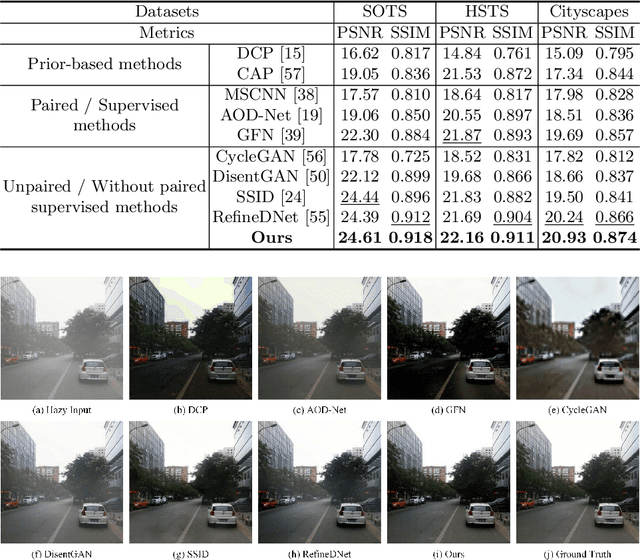
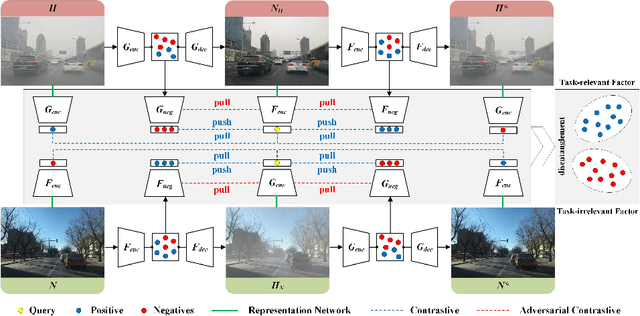
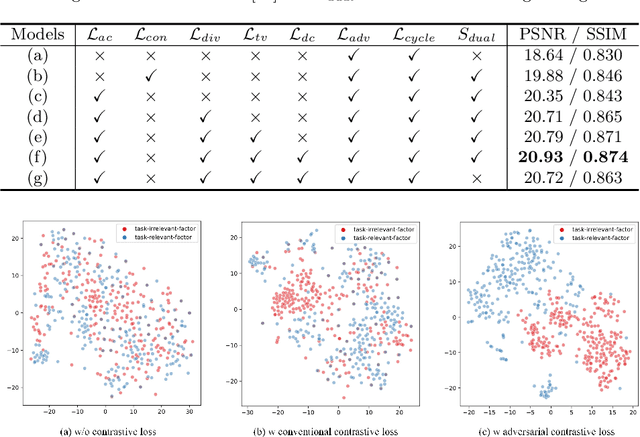
Abstract:We present an effective unpaired learning based image dehazing network from an unpaired set of clear and hazy images. This paper provides a new perspective to treat image dehazing as a two-class separated factor disentanglement task, i.e, the task-relevant factor of clear image reconstruction and the task-irrelevant factor of haze-relevant distribution. To achieve the disentanglement of these two-class factors in deep feature space, contrastive learning is introduced into a CycleGAN framework to learn disentangled representations by guiding the generated images to be associated with latent factors. With such formulation, the proposed contrastive disentangled dehazing method (CDD-GAN) first develops negative generators to cooperate with the encoder network to update alternately, so as to produce a queue of challenging negative adversaries. Then these negative adversaries are trained end-to-end together with the backbone representation network to enhance the discriminative information and promote factor disentanglement performance by maximizing the adversarial contrastive loss. During the training, we further show that hard negative examples can suppress the task-irrelevant factors and unpaired clear exemples can enhance the task-relevant factors, in order to better facilitate haze removal and help image restoration. Extensive experiments on both synthetic and real-world datasets demonstrate that our method performs favorably against existing state-of-the-art unpaired dehazing approaches.
Unpaired Adversarial Learning for Single Image Deraining with Rain-Space Contrastive Constraints
Sep 08, 2021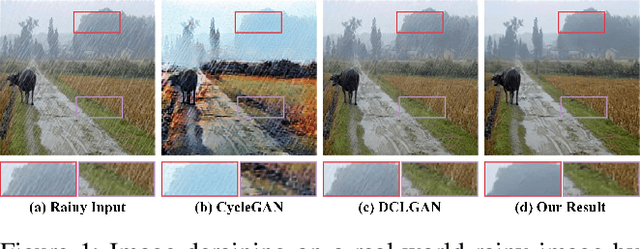

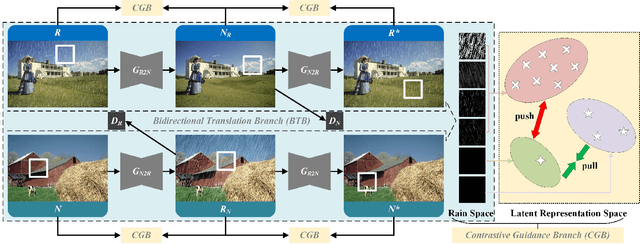

Abstract:Deep learning-based single image deraining (SID) with unpaired information is of immense importance, as relying on paired synthetic data often limits their generality and scalability in real-world applications. However, we noticed that direct employ of unpaired adversarial learning and cycle-consistency constraints in the SID task is insufficient to learn the underlying relationship from rainy input to clean outputs, since the domain knowledge between rainy and rain-free images is asymmetrical. To address such limitation, we develop an effective unpaired SID method which explores mutual properties of the unpaired exemplars by a contrastive learning manner in a GAN framework, named as CDR-GAN. The proposed method mainly consists of two cooperative branches: Bidirectional Translation Branch (BTB) and Contrastive Guidance Branch (CGB). Specifically, BTB takes full advantage of the circulatory architecture of adversarial consistency to exploit latent feature distributions and guide transfer ability between two domains by equipping it with bidirectional mapping. Simultaneously, CGB implicitly constrains the embeddings of different exemplars in rain space by encouraging the similar feature distributions closer while pushing the dissimilar further away, in order to better help rain removal and image restoration. During training, we explore several loss functions to further constrain the proposed CDR-GAN. Extensive experiments show that our method performs favorably against existing unpaired deraining approaches on both synthetic and real-world datasets, even outperforms several fully-supervised or semi-supervised models.
 Add to Chrome
Add to Chrome Add to Firefox
Add to Firefox Add to Edge
Add to Edge